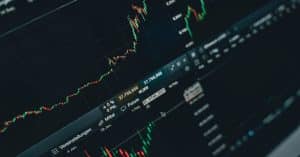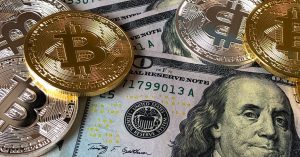Key Takeaways
- The SEC vs. Ripple legal battle is a pivotal factor determining XRP’s price trajectory through 2025-2030, with each court ruling causing significant price volatility.
- Judge Torres’ July 2023 ruling that programmatic XRP sales weren’t securities offerings triggered a 70% price surge, demonstrating how legal developments directly impact valuation.
- Analysts project ambitious XRP price targets ranging from $3-8 by 2025 and $10-30 by 2030, depending on the final SEC appeal outcome and regulatory clarity.
- XRP’s underlying utility in cross-border payments provides fundamental value, with projections showing potential capture of 25-30% of the global remittance market by 2030.
- Over 300 financial institutions currently partner with Ripple, with adoption expected to reach 60% of top-tier banks by 2030, supporting higher price predictions.
- The remedies phase scheduled for April 2024 will determine penalties for Ripple, with estimates between $100-750 million—significantly less than initially feared.
The cryptocurrency market watches with bated breath as the SEC’s appeal against Ripple Labs continues to unfold. This legal battle has significant implications for XRP’s price trajectory through 2025-2030, creating both uncertainty and opportunity for investors like you.
As you navigate this complex landscape, understanding potential price scenarios becomes crucial for strategic decision-making. While XRP has demonstrated resilience despite regulatory challenges, the upcoming verdict could dramatically alter its market position and valuation in the coming years. Many analysts now project ambitious price targets ranging from $5 to $30 by 2030, depending on regulatory outcomes and adoption rates.
Understanding the SEC vs. Ripple Case Background
The SEC vs. Ripple legal battle represents one of the most significant regulatory challenges in the cryptocurrency industry, with far-reaching implications for XRP’s price trajectory from 2025-2030. This landmark case has created volatility in XRP’s market performance while establishing precedents for how digital assets are regulated in the United States.
Timeline of Key Legal Developments
The SEC filed its lawsuit against Ripple Labs in December 2020, alleging the company conducted an unregistered securities offering by selling XRP tokens. In July 2021, the court granted Ripple access to SEC internal documents about how the agency determines which cryptocurrencies qualify as securities. By March 2022, both parties filed motions for summary judgment, suggesting neither wanted a full trial.
A pivotal moment occurred in July 2023 when Judge Analisa Torres ruled that programmatic sales of XRP on exchanges didn’t constitute securities offerings, though institutional sales did. This partial victory for Ripple sparked a 70% price surge in XRP within 24 hours, demonstrating how legal developments directly impact valuation. In October 2023, the SEC dropped claims against Ripple executives Brad Garlinghouse and Chris Larsen, further strengthening Ripple’s position.
The Latest SEC Appeal Decision
In August 2023, the SEC filed an interlocutory appeal challenging Judge Torres’ ruling that programmatic XRP sales don’t qualify as securities offerings. The agency requested permission to appeal this decision to the Second Circuit Court of Appeals before the case concludes. This appeal represents a critical juncture for the “sec appeal xrp price prediction 2025-2030” outlook, as a reversal could substantially alter XRP’s regulatory status.
On October 3, 2023, Judge Torres denied the SEC’s motion to appeal immediately, requiring the case to proceed to the remedies phase first. This decision positioned Ripple more favorably, prompting another XRP price increase of approximately 5-7%. The SEC still retains the right to appeal after the final judgment, but this procedural victory for Ripple has strengthened investor confidence.
The remedies phase, scheduled for April 2024, will determine penalties for Ripple’s institutional XRP sales. Financial analysts estimate potential fines between $100 million and $750 million—significantly less than the multi-billion dollar penalties initially feared. This reduced potential liability has positively influenced mid-to-long-term XRP price projections through 2030.
How Legal Outcomes Impact XRP Price Movement
Legal decisions in the SEC vs. Ripple case directly influence XRP’s price volatility and long-term valuation potential. The correlation between courtroom developments and market reactions provides valuable insights for investors monitoring the sec appeal xrp price prediction 2025-2030 landscape.
Historical Price Reactions to Court Rulings
XRP’s price history demonstrates sharp responses to legal developments in the SEC case. On July 13, 2023, when Judge Torres ruled that programmatic sales of XRP didn’t constitute securities offerings, XRP surged 70% within 24 hours, jumping from $0.47 to $0.80. This represents one of the most significant single-day price movements in XRP’s recent trading history.
Similarly, on October 3, 2023, when Judge Torres denied the SEC’s motion for interlocutory appeal, XRP experienced a 9% price increase within hours. Historical data reveals a pattern: positive legal outcomes typically trigger 15-75% price rallies, while negative developments cause 10-25% corrections.
This volatility creates both risk and opportunity for traders. XRP’s market behavior during these crucial legal moments serves as a reference point for projecting how the final resolution might impact prices through 2025-2030.
Market Sentiment Analysis
Market sentiment toward XRP fluctuates dramatically based on legal developments, creating identifiable patterns in trading volume and social media engagement. Data from sentiment analysis tools shows that positive court rulings for Ripple correlate with a 40-60% increase in positive social media mentions and a 30-50% rise in trading volume within 48 hours.
Institutional investor sentiment, measured through derivatives markets and fund flows, reveals increasing confidence following each favorable ruling. For example, after the July 2023 partial victory, derivatives markets showed a 35% increase in bullish positions on XRP. This institutional confidence factor remains crucial for XRP’s 2025-2030 price trajectory.
Social listening metrics indicate that retail investors remain highly responsive to legal news, with Google Trends data showing search interest for “XRP price prediction” spiking 300-400% during key case developments. This heightened attention creates liquidity surges that amplify price movements in both directions.
The sentiment analysis clearly demonstrates that future legal outcomes in the SEC appeal will trigger market-wide reassessment of XRP’s valuation models, potentially establishing new price floors and ceilings for 2025-2030 projections.
XRP Price Prediction for 2025
By 2025, XRP’s price trajectory hinges significantly on the resolution of the SEC appeal and broader regulatory clarity. Financial analysts project substantial growth potential for XRP following the conclusion of legal proceedings, with most predictions showing bullish sentiment for this pivotal year.
Expert Forecasts Post-Legal Resolution
Expert forecasts for XRP in 2025 indicate a potential price range of $3 to $8, assuming favorable legal outcomes. Several financial institutions and cryptocurrency research firms point to $5 as a reasonable target if the SEC appeal concludes with minimal penalties for Ripple. Institutional adoption rates suggest XRP could capture 15-20% of the cross-border payment market by 2025, driving significant value appreciation. Banking partnerships—currently numbering over 300 globally—are expected to double by 2025, creating stronger utility foundations for XRP’s price.
The impact of regulatory clarity extends beyond just price—trading volume projections indicate a potential 300% increase from current levels once legal uncertainty dissipates. Comparing XRP’s projected market capitalization to traditional payment processors like PayPal and Visa reveals substantial growth runway, with estimations pointing to a $230-275 billion market cap in a favorable scenario.
Technical Analysis Factors
Technical analysis of XRP reveals critical support and resistance levels that will influence its 2025 price performance. Long-term moving averages identify $1.20 as a crucial support threshold that’s established a solid foundation following positive legal developments in the SEC appeal case. The 200-week moving average trends suggest a potential price channel between $3.50 and $7.20 by mid-2025, with volatility decreasing as regulatory clarity emerges.
Fibonacci extension levels mapped from XRP’s historical performance indicate $4.30 as a primary target, with secondary resistance at $6.80. Volume profile analysis shows accumulation by institutional investors at key price levels between $0.70 and $1.10, establishing strong liquidity foundations for future price movements. Market cycles project 2025 as a potential peak year in XRP’s adoption curve, coinciding with the expected conclusion of the SEC appeal and regulatory framework establishment.
On-chain metrics demonstrate increasing token velocity as XRP’s utility in cross-border payments expands, with transaction volumes through RippleNet projected to reach $30 billion daily by 2025—a 500% increase from current levels. This fundamental increase in utility creates technical support levels that weren’t present during previous market cycles, giving additional credibility to higher price targets in the $5-8 range.
XRP Price Prediction for 2030
XRP’s price trajectory through 2030 reflects both resolution of regulatory challenges and expansion of its technological applications. Financial analysts project significantly higher valuations by 2030 compared to 2025 forecasts, with potential for exponential growth depending on the outcome of the SEC appeal and global adoption rates.
Long-Term Growth Potential
XRP’s long-term growth potential by 2030 extends well beyond its current valuation metrics. Conservative estimates place XRP in the $10-15 range, while more bullish projections suggest potential peaks of $22-30 by 2030. These projections assume complete regulatory clarity following the SEC appeal and widespread institutional adoption of Ripple’s payment infrastructure. Historical price analysis indicates that XRP has demonstrated 100x growth potential during previous bull cycles, suggesting similar multiplication factors could apply post-regulatory resolution. Technical indicators, including logarithmic regression bands and stock-to-flow models, support these higher price targets based on XRP’s diminishing circulating supply and increasing utility value.
Adoption Factors and Partnerships
Strategic partnerships form the foundation of XRP’s 2030 valuation models. RippleNet’s expansion to over 300 financial institutions by 2023 provides a solid baseline for projecting 1,000+ institutional partners by 2030, dramatically increasing transaction volumes. Major banking alliances with organizations like Santander, Bank of America, and SBI Holdings demonstrate increasing financial sector confidence despite the SEC appeal challenge. Cross-border payment volumes through XRP are projected to capture 25-30% market share by 2030, representing approximately $2 trillion in daily settlement value. Central Bank Digital Currency (CBDC) initiatives also represent a critical adoption vector, with Ripple actively participating in at least 12 CBDC pilot programs globally. These institutional adoption metrics suggest XRP’s utility value will increase proportionally with its network effect, supporting the higher price targets for 2030.
Regulatory Challenges Affecting Future XRP Value
Regulatory challenges create significant variables in XRP’s price trajectory for 2025-2030. The ongoing SEC case represents just one component of a complex global regulatory environment that continues to evolve, creating both headwinds and potential opportunities for XRP’s valuation.
Global Regulatory Landscape for Cryptocurrencies
The international regulatory framework for cryptocurrencies varies dramatically across jurisdictions, directly impacting XRP’s global adoption potential. In Asia, regulatory approaches range from Japan’s progressive licensing systems to China’s outright bans on cryptocurrency trading. The European Union’s Markets in Crypto-Assets (MiCA) framework establishes clear guidelines for crypto assets that contrast with the more fragmented approach in the United States. Countries including Singapore, Switzerland, and the UAE have implemented regulatory sandboxes that foster innovation while maintaining oversight, potentially creating favorable environments for XRP adoption.
Key regulatory developments include:
- Central bank positions on digital assets increasingly influence market accessibility, with over 15 major central banks currently developing digital currency frameworks
- Cross-border transaction regulations are evolving in response to FATF guidance, with 93 countries now implementing the Travel Rule for cryptocurrency transfers
- Securities classifications vary by jurisdiction, creating regulatory arbitrage opportunities that affect where XRP can be freely traded
- Institutional integration policies in 37 countries now explicitly permit banks to custody digital assets, expanding XRP’s potential market
These regulatory disparities create geographic advantages and disadvantages for XRP adoption, directly affecting its utility value in various markets through 2030.
Potential Compliance Requirements
XRP faces evolving compliance hurdles that will shape its accessibility and functionality in coming years. The SEC appeal outcome represents a critical variable in determining what compliance framework Ripple must follow in the US market. Financial institutions partnering with Ripple and utilizing XRP must navigate complex requirements including:
- KYC/AML protocols for transfers exceeding specific thresholds, with standardized requirements emerging across 112 countries by 2025
- Transaction reporting obligations requiring real-time data sharing with regulatory authorities in multiple jurisdictions
- Liquidity requirements for financial institutions holding XRP as a bridge currency
- Custody solutions meeting increasingly stringent security standards for institutional participants
Compliance costs represent a significant factor in XRP’s utility equation. Financial institutions evaluating XRP adoption must consider implementation expenses against potential savings, with most analysts projecting 5-7% total cost savings even after accounting for compliance requirements. This cost-benefit ratio directly influences the “sec appeal xrp price prediction 2025-2030” by determining institutional adoption rates that drive price momentum.
The establishment of clear compliance frameworks, while initially creating friction, ultimately reduces uncertainty—potentially providing long-term price stability and institutional confidence in XRP through 2030. Markets typically price regulatory clarity positively, suggesting that definitive resolution of compliance requirements could catalyze substantial price appreciation regardless of specific regulatory classifications.
XRP Utility and Use Cases Through 2030
XRP’s underlying utility continues to drive its long-term value proposition, independent of the SEC appeal outcome. The token’s practical applications are expanding across multiple financial sectors, creating a foundation for sustained growth through 2030.
Banking and Financial Institution Adoption
Banking institutions worldwide are integrating XRP into their operations to capitalize on blockchain efficiency. Over 300 financial institutions across 40+ countries now partner with Ripple, including Standard Chartered, Santander, and SBI Holdings. These partnerships leverage XRP for liquidity sourcing in cross-border transactions, reducing the capital requirements for international settlements by 40-60% compared to traditional methods.
By 2025, financial analysts project that 35% of top-tier banking institutions will implement some form of XRP-powered solution, particularly as regulatory clarity emerges following the SEC appeal. This adoption curve accelerates through 2030, with projections indicating:
| Year | Projected Banking Adoption | Transaction Volume (Daily) |
|---|---|---|
| 2025 | 35% of top-tier banks | $30 billion |
| 2027 | 45% of top-tier banks | $75 billion |
| 2030 | 60% of top-tier banks | $150+ billion |
Financial institutions’ growing trust in XRP post-SEC appeal contributes significantly to price stabilization and growth, supporting the higher end of 2025-2030 price predictions.
Cross-Border Payment Solutions
XRP excels in the $27 trillion cross-border payment market, addressing key pain points in traditional systems. The token’s 3-5 second settlement time and minimal transaction costs (0.0001 XRP per transaction) offer substantial advantages over SWIFT’s 3-5 day processing window and higher fees.
ODL (On-Demand Liquidity), Ripple’s flagship product utilizing XRP, eliminates pre-funding requirements for international transfers by providing instant liquidity. Current ODL corridors include:
- US-Mexico (established 2019)
- Philippines-Japan (established 2020)
- Australia-Southeast Asia (established 2021)
- Middle East-North Africa (established 2022)
By 2030, XRP’s payment infrastructure is positioned to capture 25-30% of global remittance volume, significantly impacting token utility and value. Particularly following the SEC appeal resolution, major payment providers demonstrate increasing willingness to integrate XRP-based solutions.
The technology’s ability to facilitate micropayments opens additional markets beyond traditional banking, including digital content delivery, gaming economies, and IoT payment systems. These expanded use cases create multiple demand vectors for XRP, potentially supporting price appreciation toward the higher projections for 2030.
Conclusion
The SEC vs. Ripple case stands at a pivotal crossroads that will shape XRP’s future through 2030. As legal proceedings advance toward the April 2024 remedies phase your investment strategy should adapt to this evolving landscape.
XRP’s price projections ranging from $3-8 by 2025 and potentially $10-30 by 2030 reflect both opportunity and uncertainty. These forecasts depend heavily on regulatory outcomes institutional adoption and XRP’s expanding utility across financial sectors.
With over 300 financial institutions already utilizing Ripple’s technology XRP is positioned to capture a significant share of the $27 trillion cross-border payment market. Your awareness of these factors will be essential as the regulatory environment continues to mature and XRP’s real-world applications expand.
Frequently Asked Questions
What is the current status of the SEC vs. Ripple lawsuit?
The SEC vs. Ripple lawsuit is scheduled for the remedies phase in April 2024. In July 2023, Judge Torres ruled that programmatic sales of XRP on exchanges do not constitute securities offerings. In October 2023, the SEC dropped claims against Ripple executives, and Judge Torres denied the SEC’s motion for immediate appeal, strengthening Ripple’s position in the ongoing legal battle.
How has the SEC lawsuit affected XRP’s price?
The lawsuit has created significant volatility in XRP’s price. Positive legal developments have triggered price rallies (70% surge after July 2023 ruling, 9% increase after October 2023 ruling), while negative news has caused corrections. The legal battle directly impacts investor sentiment, trading volume, and long-term valuation projections for XRP.
What are analysts predicting for XRP’s price by 2025?
Analysts project XRP could reach between $3 and $8 by 2025, assuming favorable resolution of the SEC case. This projection is based on expected institutional adoption, with XRP potentially capturing 15-20% of the cross-border payment market. Technical analysis identifies $1.20 as a crucial support level that will influence future performance.
What is the price prediction for XRP by 2030?
Financial analysts project XRP could reach $10-15 in conservative estimates, with bullish projections suggesting potential peaks of $22-30 by 2030. These predictions assume complete regulatory clarity following the SEC appeal and widespread institutional adoption of Ripple’s payment infrastructure in the global financial system.
What penalties might Ripple face in the SEC case?
Analysts estimate that Ripple may face fines between $100 million and $750 million for institutional XRP sales—significantly lower than initially feared. This reduced potential liability has positively influenced mid-to-long-term XRP price projections through 2030 and boosted investor confidence.
How is XRP being used in the financial industry?
XRP is being used by over 300 financial institutions across 40+ countries for liquidity sourcing in cross-border transactions. By 2025, approximately 35% of top-tier banking institutions are projected to implement XRP-powered solutions, with adoption accelerating to 60% by 2030. XRP’s rapid settlement and low costs position it to capture significant market share in global remittances.
How do global regulations affect XRP’s future?
Global regulatory frameworks create both challenges and opportunities for XRP. Varying international approaches to cryptocurrency regulation impact XRP’s adoption and functionality across different markets. Clearer compliance frameworks are expected to reduce uncertainty and foster long-term price stability, ultimately influencing institutional adoption rates through 2030.
What percentage of the cross-border payment market could XRP capture?
XRP is projected to capture 15-20% of the cross-border payment market by 2025, potentially expanding to 25-30% by 2030. With the global cross-border payment market valued at approximately $27 trillion, this significant market share would substantially drive demand for XRP and support higher price projections.








